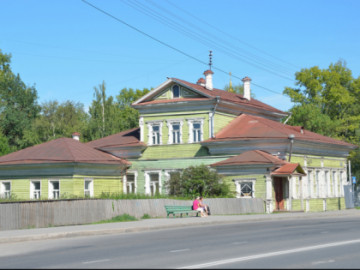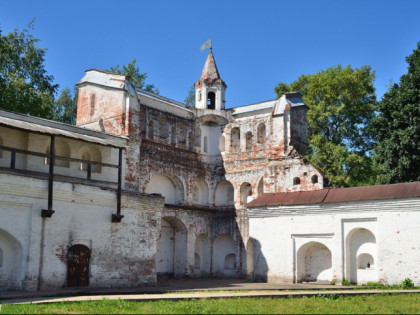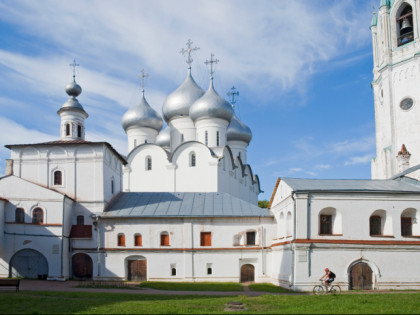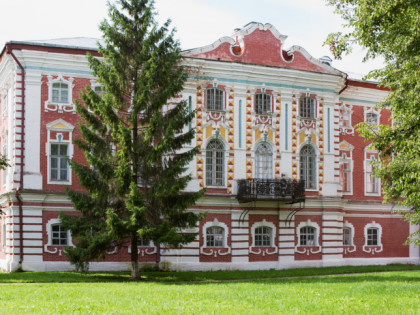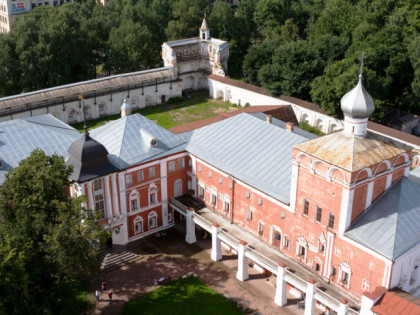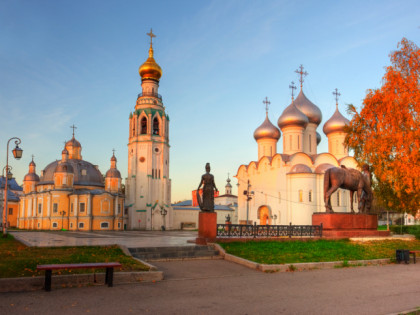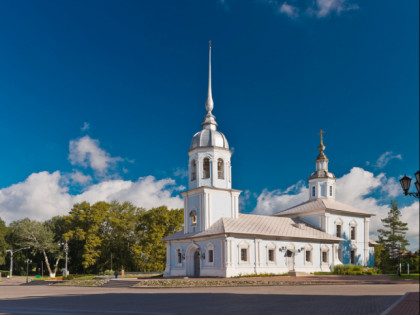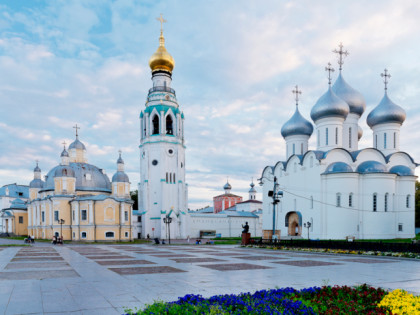Vologda Kremlin and St. Sophia Cathedral - the Unfulfilled Dream of Ivan the Terrible
The construction of the Vologda Kremlin began under Tsar Ivan the Terrible, who wanted to turn the city into a northern fortress. A five-domed stone St. Sophia Cathedral, a replica of the Assumption Cathedral of the Moscow Kremlin, was erected here during the period from 1568 to 1570. However, the Tsar’s plan to build a Kremlin in Vologda larger than that of Moscow remained unfulfilled because of his unexpected departure from the city.
Only St. Sophia Cathedral was stone in the Vologda Kremlin of the 16th century. All other buildings remained wooden until the middle of the XVII century. Even the palace of the Tsar with the Church of the Holy Joachim and Anna was made of wood. But later a stone Ekonomsky Building was erected here, with cellars, treasury and reception chambers. The octagonal tent-shaped belfry with 25 bells of the XVII - XIX centuries also became stone. No less interesting are its ancient chimes: this major city clock was brought here from Moscow in 1871.
Inside the St. Sophia Cathedral you can currently see the surviving frescoes of the 17th century by Yaroslavl master Plekhanov, restored in the middle of the 19th century. The altar of St. Sophia Cathedral was facing north-east by decision of Ivan the Terrible, although the altars should be in the east according to the canons of Russian architecture. Another important detail of the temple is its Baroque five-tier carved gilded iconostasis of the mid-18th century.
The Vologda Kremlin was changing and evolving over time. So, for example, a Resurrection Cathedral was built in the XVIII century on the site of the southeastern tower, and since 1950 it has been housing the Vologda Regional Art Gallery. In 1923 the temple was given to the museum. The Simonovsky Building of the 17th century, where once there were the bishop's private quarters and the ceremonial Cross Hall (Krestovaya Palata), is currently occupied by dioramas with typical animals of the region and historical artifacts of the Vologda State Historical and Architectural Art Museum Reserve. On the roof of the Gavriilov Building you can see the symbol of the museum: a weather vane in the form of a golden lion with a scepter. The most luxurious decoration has been preserved in the Baroque chambers of Joseph Zolotoy (Joseph the Golden) of the second half of the 18th century.








